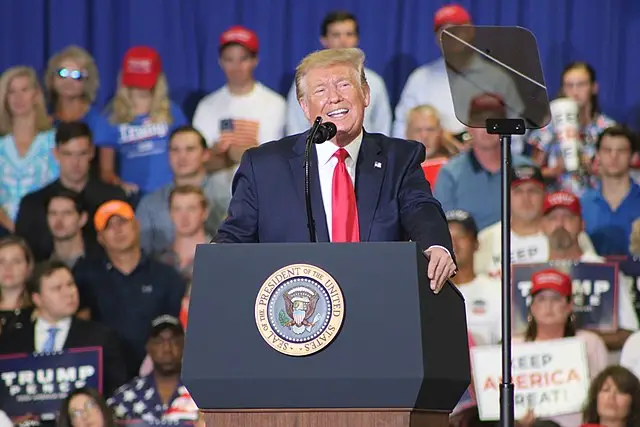‘Breathing room’ to ‘unity helps’: How the world reacted to Trump’s 90-day tariff pause

‘Breathing Room’ to ‘Unity Helps’: How the World Reacted to Trump’s 90-Day Tariff Pause
In a move that instantly rippled across global markets, former U.S. President Donald Trump announced a 90-day pause on new tariffs, aimed at easing tensions and offering breathing space amid rising trade pressures. The announcement triggered a flurry of international responses—ranging from cautious optimism to strategic skepticism.
While some governments see it as a chance to recalibrate relationships with the U.S., others view it as a tactical maneuver with underlying political intent. As global economies continue grappling with inflation and uncertain growth, Trump’s decision is more than just economic—it’s geopolitical.
Europe Welcomes the Breather, But with a Watchful Eye
Across the European Union, reactions were generally positive but nuanced. Germany’s finance minister called the pause “a welcome window for dialogue,” suggesting it could allow more constructive conversations between the EU and the United States.
France, on the other hand, responded with reserved optimism. “We appreciate the gesture,” said a French trade official, “but we must ensure it leads to lasting cooperation, not just temporary calm.”
The EU has had its share of friction with Trump-era tariffs, particularly on steel and aluminum. While the temporary halt has eased pressure on manufacturers, many in Brussels remain wary of what might follow once the 90-day clock runs out.
China Reacts with Strategic Patience
In Beijing, the official response was measured. China’s Ministry of Commerce issued a statement calling the move “a step in the right direction,” while also emphasizing the importance of “balanced and reciprocal trade policies.”
Behind the scenes, analysts suggest that China may use this pause to re-evaluate ongoing trade strategies with the United States. “It gives Beijing time to assess how seriously the U.S. is about long-term stability,” noted one Shanghai-based economist.
China has long been at the center of U.S. tariff debates, and this temporary truce may provide an opening for renewed negotiations—though not without caution.
India Sees Opportunity in Stability
India’s commerce ministry welcomed the pause, seeing it as a potential moment to build stronger trade bridges. A government spokesperson noted that “reduced volatility in trade policy allows Indian exporters to plan better and engage more confidently with U.S. buyers.”
Indian businesses, especially in the pharmaceutical, textile, and tech sectors, are expected to benefit in the short term. However, industry leaders are also calling for clarity on what comes next after the 90 days.
“Temporary relief is good,” said a Mumbai-based export consultant. “But businesses want predictability, not a guessing game every quarter.”
Canada and Mexico Urge Long-Term Commitment
North America’s closest partners, Canada and Mexico, also expressed hope that the tariff freeze would translate into more stable trilateral ties.
Canada’s prime minister issued a brief statement: “We believe in fair, free trade—and this pause is a chance to reinforce that.”
Mexico echoed the sentiment, calling for a “reset” on key trade disagreements, especially concerning agricultural goods and auto parts.
Both nations remain integral to U.S. supply chains and have frequently been caught in the crossfire of tariff escalations. Their leaders are pushing for clear communication and binding agreements rather than short-lived pauses.
Business Leaders Applaud, but Warn of Short Timelines
Global business groups and trade associations reacted positively—though many cautioned that a 90-day window might not be enough for meaningful change.
The World Trade Organization (WTO) issued a neutral response but urged all parties to “use this period constructively.”
Meanwhile, major corporations, particularly in the tech and manufacturing sectors, welcomed the move. Several CEOs of multinational firms told the media that the temporary halt would “decrease uncertainty” and “help revive stalled deals.”
Political Analysts Read Between the Lines
While economic players focus on trade figures and shipment schedules, political analysts are examining the move’s timing and potential motivations.
“This pause comes at a moment when Trump is trying to regain his political momentum,” said a Washington-based political commentator. “It could be part of a broader strategy to appear more diplomatic heading into key election milestones.”
Some critics argue that the move is more symbolic than practical, noting that unless it’s followed by transparent negotiations, it may end up being “a photo-op disguised as policy.”
The Bigger Picture: A Test of Global Cooperation
Whether this tariff pause leads to deeper collaboration or a return to economic sparring remains to be seen. What’s clear is that the world is watching closely.
The next three months are critical—not only for U.S. trade relations but also for setting the tone of global cooperation in a post-pandemic, inflation-ridden era.
As one European trade delegate put it, “This 90-day breather is not the finish line. It’s a test of sincerity.”






